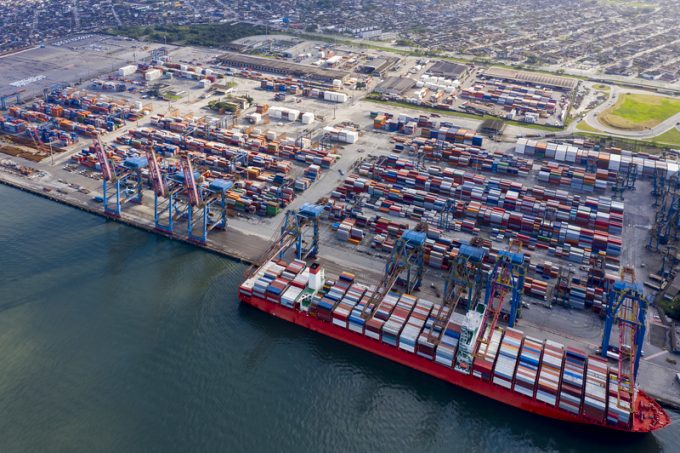Zemba gets things moving, as Hapag-Lloyd signs up for 'greener' shipping
Proving to be more than just idle talk, the Zero-Emission Maritime Buyers’ Alliance (Zemba) has ...

Ocean carriers are looking to extend transit times in a bid to improve schedule reliability and cut costs.
They are starting to add more buffer time into schedules to mitigate the impact of chronic global port congestion.
Hapag-Lloyd said today it was adding seven days to the westbound schedule of its AS2 Asia to South America east coast schedule for 13 weeks – one of two loops it operates on the trade in cooperation with Maersk, Hamburg Süd, MSC and ONE.
It said the “schedule sliding” was necessary due to the severe congestion from “the challenging operational conditions in Asia”.
The carrier told customers adding the extra time to the schedule would allow it “to cope with the delays, minimising port cancellations and disruptions, hence providing you a more reliable service”.
CEO Rolf Habben Jansen alluded to the “slidings” strategy during a webinar presentation last week.
“Looking at congestion we see at US ports and other places we will still see delays in the first quarter, and we will not see a lot of blankings, but we will see slidings, because when a ship has to wait six days at one port, and at another port it has to wait four days, you are 10 days behind schedule, which in reality means that you also lose a week, even if you sail back at top speed, so I think that we will see slidings and I think that we will also see all the capacity that is available deployed.”
The Loadstar understands that some alliance carrier members have called for an urgent review of their networks in order to alleviate the costly last-minute disruptions from having to skip ports.
One Asia-North Europe carrier source told The Loadstar this week that its live schedules were, in some cases, “almost unrecognisable” from the official network.
“If you have to wait off a UK port for a week and then eventually decide to skip and dump the boxes in Zeebrugge, Rotterdam or Bremerhaven, then the schedule is totally shot to pieces,” he said.
“Some of us have been arguing that we have to build more buffer time into the schedules and, by doing so, we would actually save costs by not having to make last-minute port changes,” he said.
“Now that it looks like the demand spike will continue until at least the Chinese New Year – and our visibility suggests maybe as far out as Easter – I think we will have to look more closely at what we can do to improve reliability and add more certainty to the network,” he added.
Container schedule reliability slumped to a record low of 50.1% in November, according to a SeaIntelligence analysis. CEO Alan Murphy warned shippers that “with widespread port congestion, and with carriers not letting off capacity-wise until at least the CNY”, that schedule reliability was unlikely to improve until the second quarter of next year.
SeaIntelligence data is based on the published schedules of individual carriers, thus the performance of a particular carrier can be skewed by some factors outside its control, such as port congestion.
SeaIntelligence’s Lar Jensen commented that due to the long wait times being experienced at ports, “it would not be reasonable to purely blame carriers for this dramatic drop in performance”.
Comment on this article